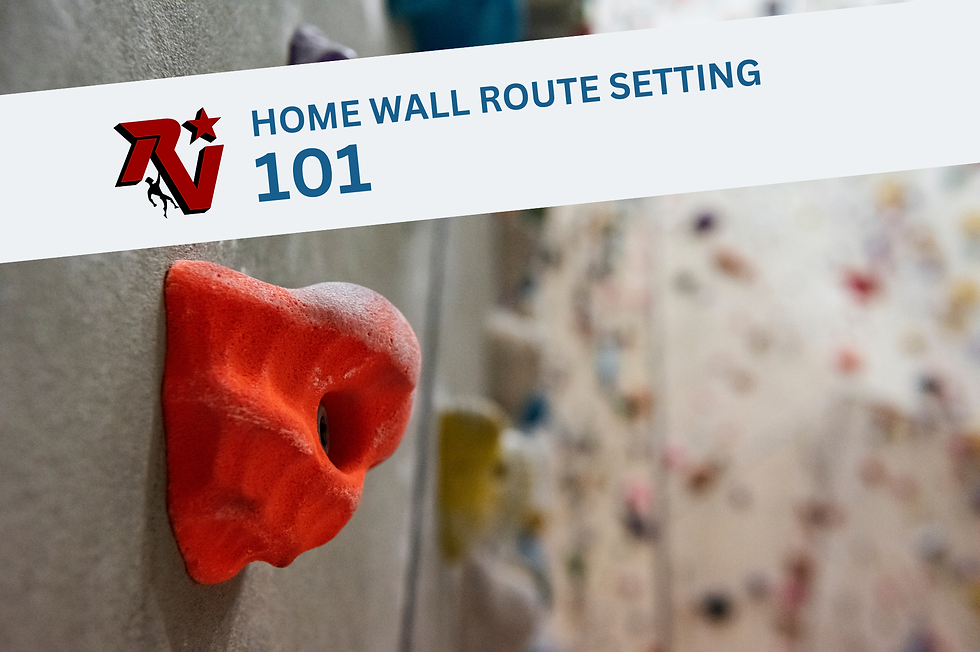Pinch Block Training...For More Than Just Pinch Strength
- Dovi Hirsch
- Mar 1, 2021
- 3 min read
by Christopher Schafenacker

For all the popularity hangboarding has gained in this past pandemic year, it is a wonder that the pinch block hasn’t made a stronger showing. After all, our opposable thumbs don’t only distinguish us as the earth’s most advanced species, they also make us the animal kingdom’s most mediocre climbers. While it may be true that no amount of pinch training will get you climbing as well as even the clumsiest insect, it will get you floating your projects if the practice becomes a part of your normal training routine.
Pinch strength is a vital part of climbing hard, be it indoor our out, but it is especially important on real rock. After all, while gym holds are sculpted to test specific grip types, natural holds are rarely uniform. Look hard enough at any crimp and more often than not you’ll find a thumb catch; inspect any sloper and there’s sure to be a ripple. With strong thumbs, both features make what may have been a marginal hold something you can hang onto for days. What’s more, eventually this pandemic will end and travel will return and when you find yourself wiggling up 130 feet of tufa-ridden Greek limestone, you’ll thank Zeus you did more than just hangboard all winter.
Introduction to Pinch Training
As Eva López, who holds a PhD in evidence-based training for climbing, explains, poor form when training the pinch grip can provoke serious injury. Attempting to hang from vertical, front-facing pinches the way one would on a hangboard places engaged thumb muscles in excessive ulnar flexion which is exactly the motion that triggers De Quervain syndrome. To avoid this, López suggests hanging from pinches while executing a front lever, hanging vertically from something like Stefano Ghisofli’s Power Box, or for us mere mortals, making use of a pinch block.
Proper block training forms means maintaining shoulders retracted and posterior chain engaged (think: squeeze your butt) while holding a weighted block with your arm fully-extended by the side of your body. Though natural pinches come in all sizes, a wide (but comfortable) grip that is no more than one thumb-pad in depth is the most advantageous for training.
Once you have identified the grip best-suited to your hand size, you want to calculate the maximum weight you can sustain for fifteen seconds. This means attaching incrementally heavier things to your pinch block and doing a series of max hangs until you find the sweet spot. Once complete, you’re ready to start training.
Basic Pinch Block Training Protocol: Ten-Second Repeaters
1. Using only one hand at a time, lift your calculated training weight by grasping your pinch block, bending at the knees, and rising into a standing position. Ensure shoulders remain retracted and the posterior chain remains engaged for the entire exercise. Sustain your grip on the block for ten seconds.
2. Upon completing a ten-second hang with one hand, immediately pass the block to the other and repeat.
3. Complete six cycles of hangs with each hand resting only when the opposite hand is engaged.
4. Rest for five minutes between sets.
5. Aim to complete six sets total.
As is true of most grip-strength training, beginners should complete the above program no more than twice a week while those with more experience can tack on a third session. And yes, in case you were wondering, pinch training can safely be done in conjunction with traditional hangboarding. Enjoy!
Featured Climbing Training Gear
*NEW* The Rocketeer Wall: our free-standing adjustable solution for those who can’t mount a hangboard anywhere in their home or apartment—or who are limited on space. The Rocketeer gives climbers the additional option to set specific climbing holds. Recreate the crux holds of your proj and get ready to send, bruh.
The Rocket Wall: Available in 6’ and 8’ widths, it’s been tough for us to keep up with the demand for this innovative home climbing wall solution. Slightly overhanging, the Rocket Wall is big enough to set routes on, or to build a systems board.
The Rock-Stah: Our handcrafted version of a traditional hangboard, with curving crimp rails to help alleviate unnecessary strain on your pulleys. Because ain’t no one got time for a finger injury…










Comments